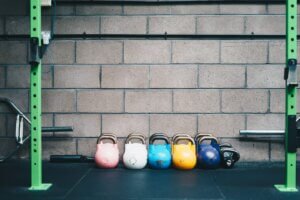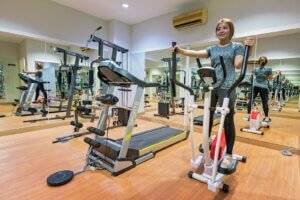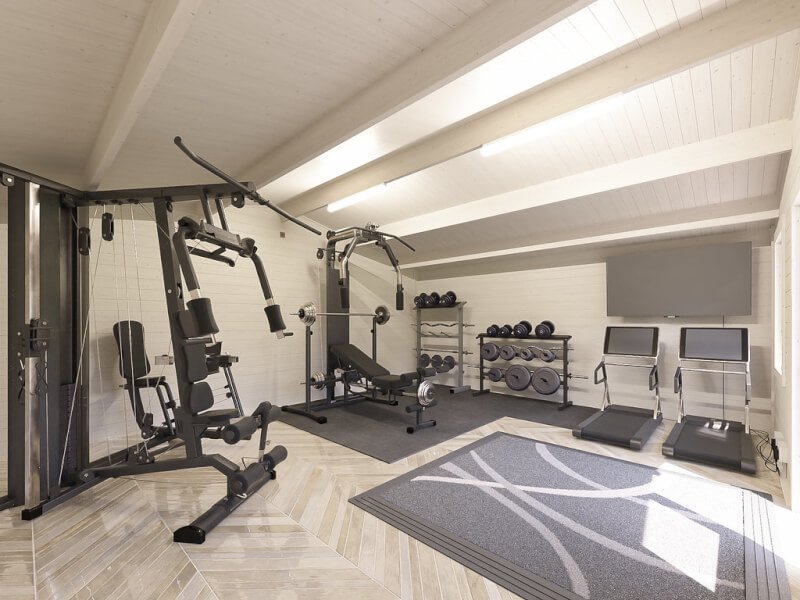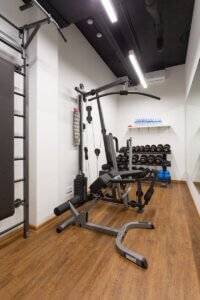Transform your basement into the ultimate workout retreat with these DIY home gym ideas. Whether you’re a fitness enthusiast or simply seeking a convenient and private space to exercise, these ideas will inspire you to create a functional and stylish gym right in your own home. From innovative storage solutions to space-saving equipment options, discover how you can optimize your basement to meet your fitness goals. Get ready to elevate your workout game with these DIY home gym ideas for basement spaces.
1. Determine Your Fitness Goals
Evaluate your fitness goals
Before you start planning your basement gym, it’s important to determine your fitness goals. Ask yourself what you want to achieve through your workouts. Are you looking to build strength, lose weight, improve cardiovascular endurance, or simply stay active? Understanding your goals will help you choose the right equipment and layout for your gym.
Consider the space available in your basement
Next, evaluate the space available in your basement. Measure the dimensions and take note of any obstacles such as support columns, pipes, or low ceiling heights. This will give you a clear idea of how much space you have to work with and what limitations you may need to consider when planning your layout.
Think about the equipment you need
Once you know your fitness goals and have assessed the available space, consider the equipment you need to achieve those goals. Make a list of the essential pieces of equipment such as weights, cardio machines, and resistance bands. Think about any specific exercises or training methods you enjoy or want to try. This will help you prioritize your equipment purchases and ensure you create a well-rounded gym setup.
2. Plan Your Layout
Measure the dimensions of your basement
To plan your layout effectively, measure the dimensions of your basement accurately. Take note of the length, width, and height of the space. This information will be crucial in determining where each piece of equipment will fit and how much clearance you’ll have for various exercises.
Create a floorplan
Using the measurements you took, create a floorplan of your basement gym. Consider factors such as traffic flow, the arrangement of equipment, and the spacing between different exercise areas. Don’t forget to allocate enough space for stretching and walking around comfortably between exercises.
Allocate separate areas for different exercises
To maximize the functionality of your home gym, it’s a good idea to allocate separate areas for different types of exercises. For example, you might have a dedicated corner for strength training with a power rack and weights, an open space for cardio exercises, and a yoga or stretching area. This will create a versatile workout space where you can easily transition between different types of exercises.

3. Flooring Options
Consider rubber flooring for shock absorption
When it comes to basement gym flooring, rubber is an excellent choice. It offers shock absorption, which is crucial for protecting your joints during high-impact exercises like jumping or lifting weights. Rubber flooring is also durable and easy to clean, making it ideal for a home gym environment.
Choose interlocking foam tiles for easy installation
If you’re looking for a more budget-friendly and DIY-friendly option, consider interlocking foam tiles. These tiles are easy to install, and they provide cushioning and support for your workouts. They come in various thicknesses and colors, allowing you to customize the look and feel of your gym floor.
Use carpet tiles for a softer surface
If you prefer a softer and more comfortable surface for your basement gym, carpet tiles can be a good option. They provide insulation and cushioning while adding a cozy feel to your workout space. Carpet tiles are also easy to replace if any section gets damaged, making them a practical choice for a high-traffic area like a gym.
4. Lighting and Ventilation
Install bright and adjustable lighting
Good lighting is essential for a functional and enjoyable gym space. Install bright and adjustable lighting fixtures to ensure sufficient illumination throughout your basement gym. Consider using LED lights, as they are energy-efficient and provide a bright, daylight-like glow. Adjustable lighting options will allow you to create the right ambiance for different types of workouts.
Ensure proper ventilation and airflow
Basements can often feel stuffy or humid, so it’s crucial to ensure proper ventilation and airflow in your gym. Install ceiling fans or invest in a small ventilation system to keep the air circulating. If your basement has windows, open them to allow fresh air to flow in during your workouts. Proper ventilation will help improve air quality and make your workouts more comfortable.
Consider adding fans or windows for fresh air
If the layout of your basement allows, consider adding fans or even windows to bring in fresh air. Fans can create a pleasant breeze that keeps you cool during intense workouts. Natural light from windows can also uplift your mood and make the space feel more inviting. Both these additions can greatly enhance your overall workout experience.

5. Wall Decor and Mirrors
Hang motivational posters or artwork
To make your basement gym more inspiring, consider hanging motivational posters or artwork on the walls. Choose images or quotes that resonate with your fitness goals and provide a positive and uplifting energy. These visual cues can serve as reminders of your progress and help keep you motivated throughout your workouts.
Install large mirrors to check your form
Mirrors are a must-have in any gym space, as they allow you to check your form and technique during exercises. Install large mirrors on one or more walls of your basement gym, ensuring that they are positioned at the right height for you to see yourself from head to toe. Mirrors also create an illusion of more space and add a stylish touch to your gym.
Consider using chalkboards for tracking progress
If you are someone who loves tracking your progress and setting goals, consider using chalkboards on one of the walls. You can write down your workout routines, personal records, or motivational quotes. Chalkboards give you the flexibility to update and erase information easily, making them a practical and visually appealing addition to your gym.
6. Strength Training Equipment
Invest in a power rack or squat rack
For those interested in strength training, a power rack or squat rack is essential. These sturdy structures provide a safe and versatile platform for exercises such as squats, bench presses, and pull-ups. Look for a power rack or squat rack that can accommodate your height, weight, and specific exercise needs.
Purchase a set of dumbbells or adjustable weights
Dumbbells are a versatile and space-efficient piece of equipment for strength training. Consider purchasing a set of dumbbells in different weights or invest in adjustable weights that can be customized to your desired resistance level. This will allow you to perform a wide range of exercises targeting various muscle groups.
Consider getting a bench press or multi-purpose weight machine
To further enhance your strength training routine, consider adding a bench press or a multi-purpose weight machine to your gym. A bench press will enable you to target chest and arm muscles effectively, while a multi-purpose weight machine provides a variety of exercise options in a compact design. Choose equipment that aligns with your fitness goals and available space.

7. Cardiovascular Exercise Options
Set up a treadmill or elliptical machine
Cardiovascular exercise is crucial for maintaining overall fitness, and a basement gym provides a convenient space for such workouts. Set up a treadmill or an elliptical machine to get your heart rate up and burn calories. Consider the available space, noise level, and your preference between these two popular cardio options. Look for features like adjustable incline and built-in workout programs to keep your cardio routine challenging and engaging.
Consider using a stationary bike or rowing machine
If running or using an elliptical machine isn’t your preferred form of cardio, consider incorporating a stationary bike or a rowing machine into your home gym. Stationary bikes provide a low-impact workout and are ideal for people with joint or lower back issues. Rowing machines deliver a full-body workout, engaging various muscle groups while boosting your cardiovascular endurance.
Include jump ropes or a punching bag for high-intensity workouts
For a high-intensity cardio workout, don’t forget to include accessories like jump ropes or a punching bag in your basement gym. Jumping rope is a fun and effective way to get your heart pumping, while a punching bag can help you improve your strength, speed, and coordination. These accessories add variety to your workouts and can provide an outlet for stress release.
8. Functional Training and Flexibility Tools
Include resistance bands or TRX suspension trainers
To incorporate functional training into your workouts, consider including resistance bands or TRX suspension trainers in your home gym. Resistance bands are versatile and portable, allowing you to perform a wide range of exercises targeting different muscle groups. TRX suspension trainers use your own body weight for resistance and help improve strength, flexibility, and core stability.
Purchase stability balls or balance boards for core exercises
For core-focused workouts, stability balls or balance boards are excellent additions to your basement gym. Stability balls engage your core muscles during exercises and can be used for workouts targeting various body parts. Balance boards help improve balance, coordination, and overall body stability. These tools add a fun and dynamic element to your core training sessions.
Install a pull-up bar or gymnastic rings for bodyweight training
Bodyweight exercises are effective for building strength and enhancing overall fitness. Install a pull-up bar or gymnastic rings in your basement gym to have a dedicated space for bodyweight training. Pull-ups, chin-ups, and a wide range of gymnastic movements can be performed using these pieces of equipment, providing a challenging and versatile workout experience.

9. Storage and Organization Solutions
Utilize wall-mounted shelves or racks for equipment
To keep your basement gym organized and minimize clutter, utilize wall-mounted shelves or racks for storing your equipment. This will make it easier to access your weights, resistance bands, or smaller tools like yoga blocks or foam rollers. Wall-mounted storage solutions also free up floor space, allowing for a more functional and visually appealing gym environment.
Invest in storage bins or cabinets for smaller items
Smaller workout accessories like gloves, wrist straps, or jump ropes can be easily misplaced if not properly stored. Invest in storage bins or cabinets to keep these smaller items organized and readily accessible. Labeling the bins or using transparent containers will add another level of convenience, as you’ll be able to quickly locate what you need for each workout session.
Consider installing pegboards or hooks for easy access
Pegboards or hooks can be a great addition to your storage and organization solutions. Install them on one of the walls in your basement gym to hang items like resistance bands, jump ropes, or even your gym towel. These easily accessible storage solutions help keep your workout essentials within reach, making your gym space more efficient and user-friendly.
10. Entertainment and Tech Setup
Install a TV or projector for workout videos
Make your workouts more enjoyable and engaging by installing a TV or projector in your basement gym. You can stream workout videos, follow along with fitness apps, or even watch your favorite TV shows or movies while exercising. Having a visual entertainment option can help distract you from the intensity of your workout and make your gym sessions more entertaining.
Set up a sound system for music or podcasts
Music is a powerful motivator and can enhance the overall ambiance of your home gym. Set up a sound system with speakers or wireless headphones to enjoy your favorite workout playlists or listen to motivating podcasts. Make sure the sound system is positioned strategically so that the sound quality is optimized throughout your basement gym.
Consider adding smart devices for virtual training or monitoring
If you’re looking to take your home gym to the next level, consider adding smart devices such as fitness trackers, heart rate monitors, or virtual training platforms. These devices can provide real-time feedback on your workouts, track your progress, and offer personalized training programs. The integration of technology in your basement gym can enhance your fitness journey and keep you motivated to achieve your goals.
DIY Home Gym Ideas for Basement Spaces: Conclusion
Creating a home gym in your basement can be a rewarding and cost-effective investment in your health and fitness. By determining your fitness goals, planning your layout, considering the right flooring options, ensuring proper lighting and ventilation, incorporating wall decor and mirrors, investing in the right equipment, and implementing storage and organization solutions, you can transform your basement into a well-equipped and inspiring gym space. With the added entertainment and tech setup, your workouts will become more enjoyable and engaging. So get started on your DIY home gym project today and begin your journey to a healthier and fitter you!



